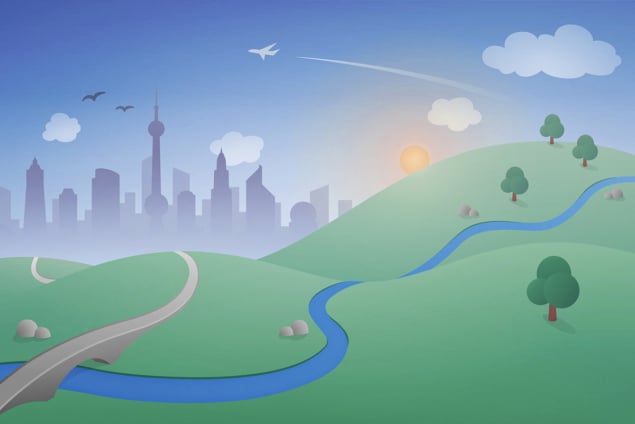
The rural areas, or hinterlands, surrounding cities generally provide a mix of ecosystem services to the urban inhabitants. And that mix typically conforms to one of several archetypes. That’s the conclusion of scientists in Canada, who believe the archetypes reflect the relative prosperity of cities, as well as cities’ ability to exploit one another’s ecosystem services through globalization.
“The ecosystems surrounding wealthy cities tend to produce services like air quality, carbon storage, and water quality,” says Daniel Haberman of McGill University, Canada. “Conversely, ecosystems surrounding poorer cities tend to mainly produce services like crops and livestock, which are usually less resilient ecosystems.”
The ecosystem services provided for urban inhabitants by their city’s hinterlands range from basic supplies such as food and water to less obvious necessities such as climate regulation, air purification and recreation. These ecosystem services vary from place to place, partly due to the properties of the areas themselves. Deserts, for example, are always going to be relatively poor at food production.
Ecosystem services also vary due to socio-economic factors. For instance, it’s clear that as cities become wealthier, their wealth derives less from directly exploiting nearby ecosystems and more on manufacturing and intellectual services, even if the cities still require raw materials from elsewhere. But such links between socio-economics and ecosystem services are poorly understood.
To investigate, Haberman and McGill colleague Elena Bennett gathered dozens of different datasets, including those on climate, crop production and parkland. They combined them with models to create global maps of eight different ecosystem services: crops, water, livestock, carbon sequestration, carbon storage, air quality, water quality and recreation. Then they analysed the hinterlands of the world’s biggest cities to compare how they are exploited to produce the different services.
The archetypal ecosystem-service mixes the researchers found were: desert cities such as Las Vegas, which excel at water quality to the detriment of all other services; South Asian cities such as Shanghai and Mumbai, which are good at producing crops and livestock to the detriment of water quality; tropical cities such as Singapore, as well as others such as Berlin, which specialize in regulating services like carbon sequestration and storage but are poor at producing crops and other basic provisions; and cities all over the world such as Paris and Toronto, which produce average or below-average amounts of all services.
Not all hinterlands conformed exactly to the archetypes, however. “Trade-offs that we typically expect to see – such as high food production with low water quality – are not the case for all cities,” says Haberman. “There are a group of cities that actually manage to use their hinterlands to produce large amounts of food without sacrificing water quality. By looking at cities and their ecosystems around the world, we can spot groups of cities that are creating more ecosystem service synergies and minimising trade-offs, and study those areas more deeply to learn from them.”
The research is described in Environmental Research Letters.



